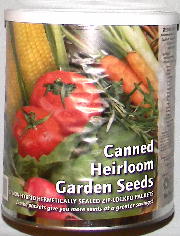


































| Package | Seed Variety | Germination % |
| 1. | Beans: Blue Lake Bush | 100 % |
| 2. | Beets: Detroit Dark Red | 85 % |
| 3. | Carrot: Scarlet Nantes | 5 % |
| 4. | Corn: Golden Bantam | 95 % |
| 5. | Cucumber: Straight Eight | 90 % |
| 6. | Lettuce: Black Seeded Simpson | 100 % |
| 7. | Onion: Utah Yellow Sweet Spanish | 95 % |
| 8. | Radish: Champion | 90 % |
| 9. | Spinach: Bloomsdale Long Standing | 45 % |
| 10. | Squash: Zucchini Black Beauty | 100 % |
| 11. | Tomato: Hamson | 80 % |
| 12. | Watermelon: Crimson Sweet | 100 % |


